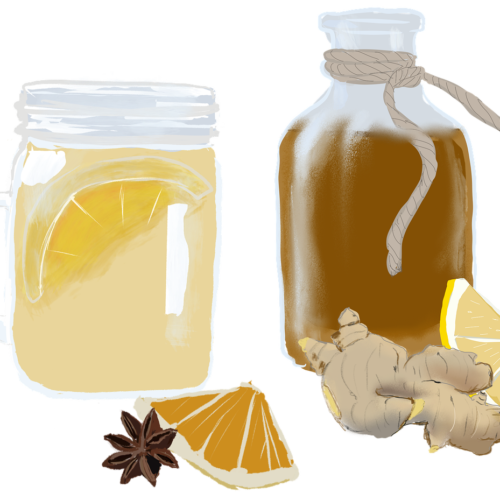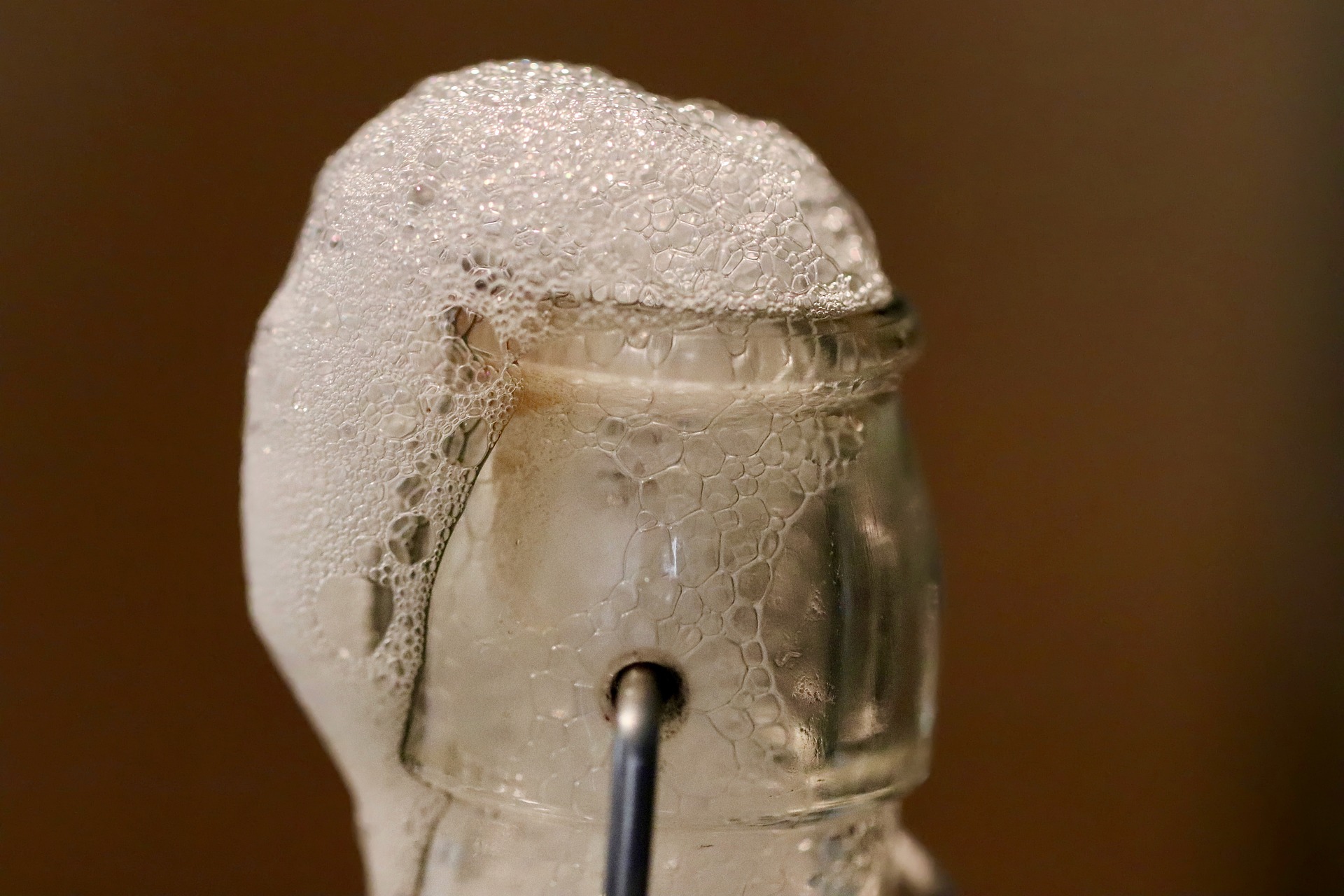Preparing kombucha in a traditional way involves a fermentation process that requires some basic equipment and ingredients.
Kombucha tea is a fermented beverage made from sweetened tea and a symbiotic culture of bacteria and yeast (SCOBY). It has been consumed for centuries and is believed to have originated in China or Russia. But now it has become popular and known for its potential health benefits, including probiotic properties that may support gut health, although more research is needed in this area. It’s also a source of B vitamins and antioxidants.
To make kombucha, sweetened tea is combined with the SCOBY and allowed to ferment for a period of 7-14 days. During fermentation, the bacteria and yeast in the SCOBY consume the sugar in the tea and produce various acids, enzymes, and probiotics. The result is a tangy, slightly effervescent beverage with a unique flavor profile that can vary depending on factors such as the type of tea used, the length of fermentation, and any additional flavorings added during a second fermentation. Here’s a step-by-step guide:

Kombucha Tea
Equipment
- 1 Bottle of 1 liter for bottling
- 1 Paper coffee filter
- 1 Rubber band
- 1 Stirring utensil Wooden or plastic
Ingredients
- 1 SCOBY (Symbiotic Culture Of Bacteria and Yeast)
- 1 cup kombucha from a previous matured culture
- 3 cups water filtered
- 3 bags black or green tea (or 1 tablespoons of loose leaf tea)
- 1 cup sugar
Instructions
- Prepare the TeaBring 3 1/2 quarts of filtered water to a boil in a large pot. Remove from heat and add the tea bags or loose leaf tea. Let the tea steep for about 10-15 minutes. Remove the tea bags or strain out the loose leaf tea and discard.
- Add SugarWhile the tea is still warm, stir in the granulated sugar until it completely dissolves. Allow the sweetened tea to cool to room temperature.
- Prepare the Fermentation VesselClean the glass jar or fermentation vessel thoroughly with hot water. Avoid using soap or cleaners, as they can harm the SCOBY. Pour the cooled sweetened tea into the fermentation vessel.
- Add the SCOBY and Starter LiquidCarefully place the SCOBY on top of the sweetened tea. Pour in 1 cup of mature kombucha as a starter liquid. This helps to lower the pH and prevent mold growth.
- Cover and FermentCover the fermentation vessel with a breathable cloth or paper coffee filter. Secure the cover with a rubber band or string to keep out insects and debris. Place the vessel in a warm, dark place where it won't be disturbed, ideally with a temperature between 70-80°F (21-27°C). Let the kombucha ferment for 7-14 days, depending on your taste preference and the temperature of your environment. Warmer temperatures will result in faster fermentation.
- Check the FermentationAfter a few days, you may start to see a new SCOBY forming on the surface of the kombucha. This is normal and indicates that fermentation is occurring. You can taste the kombucha periodically using a clean spoon to check for desired flavor. It should be slightly tangy and slightly sweet.
- Bottle the KombuchaOnce the kombucha reaches your desired level of acidity, it's time to bottle it. Carefully remove the SCOBY and set it aside in a clean container with some of the kombucha as starter for your next batch. Pour the finished kombucha into glass bottles, leaving a bit of headspace at the top. Tightly seal the bottles and store them in the refrigerator to slow down fermentation.
- Optional Second Fermentation (Flavoring)If desired, you can do a second fermentation to add flavor to your kombucha. Simply add fruits, herbs, or spices to the bottled kombucha and let it ferment for an additional 2-5 days at room temperature before refrigerating.
- Enjoy Your KombuchaYour homemade kombucha is now ready to drink! Serve it chilled over ice, and feel free to experiment with different flavors and combinations.
Notes
- DIFFICULTY: medium
- BUDGET: medium

By following these steps, you can prepare traditional homemade kombucha with ease. Remember to practice good hygiene throughout the process to avoid contamination, and enjoy the probiotic-rich benefits of this fermented tea!




I love preparing kombucha with grated fresh ginger and pulverized cherries in blender. Try it!